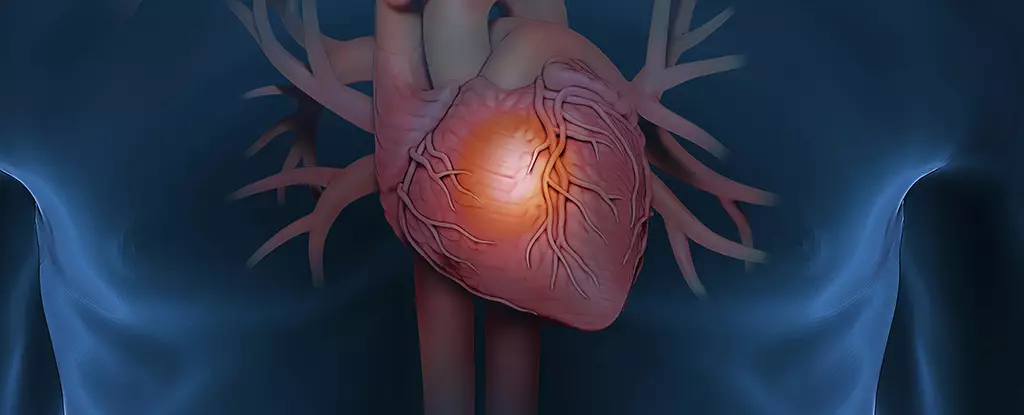Recent research has illuminated a groundbreaking finding regarding the human heart’s remarkable ability to heal itself after experiencing heart failure. The study highlights how appropriate therapeutic interventions can significantly enhance the heart’s regenerative capabilities, with potential outcomes that could surpass those seen in healthy hearts. Such developments present an exciting opportunity for scientists and clinicians aiming to improve recovery rates for individuals suffering from heart damage due to heart failure.
The central theme of this research revolves around the activation of the heart’s intrinsic healing mechanisms. Dr. Olaf Bergmann, a prominent molecular biologist from the Karolinska Institute in Sweden, states that these outcomes point toward the possibility of a “hidden key,” one that could trigger enhanced repair processes within the heart. This discovery invites further inquiry into the physiological phenomena underpinning heart recovery, prompting a need for comprehensive studies that could aid in the development of new therapeutic strategies.
Understanding Left Ventricular Assist Devices (LVAD) and Their Impact
The research involved tracking recovery in a cohort of 52 heart failure patients, a substantial number of whom received a left ventricular assist device (LVAD). This surgical device serves the essential function of aiding in blood circulation when the heart is unable to perform adequately on its own. Traditionally, patients requiring an LVAD either need long-term support or await heart transplant. However, the significant recovery seen in some patients, allowing for the potential removal of the LVAD, raises questions about the processes involved.
Despite the apparent success of LVAD implantation, the biological mechanisms behind its effectiveness remain largely undefined. Questions linger regarding whether LVAD therapy contributes to the generation of new heart muscle cells, or cardiomyocytes, during recovery. To delve deeper into this inquiry, researchers employed a novel approach by measuring the radioactive carbon isotope, 14C, within heart cells. Since the atmospheric concentration of 14C has systematically decreased since the cessation of nuclear testing in 1963, its presence serves as a reliable indicator of cellular age—thus providing insights into the dynamic process of cardiomyocyte renewal.
The evaluation revealed a startling disparity in cardiomyocyte regeneration rates: patients with heart failure exhibited cell renewal rates ranging from 18 to 50 times lower than those observed in healthy individuals. However, the introduction of LVAD therapy appeared to catalyze a notable surge in regeneration, with cardiomyocyte creation occurring at a rate at least six times greater than what is typically seen in a healthy heart. This exciting finding opens up avenues for understanding how certain interventions can activate dormant regenerative pathways within cardiac tissue.
Despite this promising revelation, researchers acknowledge the need for further investigation to elucidate the underlying biological mechanisms that facilitate this impressive regeneration. Bergmann reiterates that existing data do not yet offer a clear explanation but emphasizes the commitment to studying these cellular and molecular processes in greater detail. The objective is to harness this understanding to inform the creation of effective therapeutic strategies that could support and amplify the heart’s intrinsic healing capabilities.
Promoting the heart’s self-healing capabilities presents an innovative approach to treatment that diverges from more invasive alternatives, such as cell transplantation. As scientists continue to explore various methodologies for restoring heart function, exciting advancements are being made in the realm of biotechnological innovations. Researchers are revolutionizing the generation of heart tissue in laboratory settings, which could pave the way for novel therapeutic options.
Moreover, studies are diving deeper into the biological processes involved in cardiac repair, shedding light on ways to encourage heart cells to adopt stem cell-like characteristics when faced with injury. This innovative direction in research paints a hopeful picture of the future of cardiac care. As we learn more about how to optimize the heart’s repair processes, there is growing optimism that recovery following heart-related incidents may become increasingly effective.
The potential to unlock the heart’s regenerative capabilities through targeted therapy represents an encouraging breakthrough in cardiovascular medicine. As investigations continue, the prospect of enhancing recovery outcomes for individuals with heart failure has never been more tangible—a beacon of hope for millions affected by this condition.


Leave a Reply